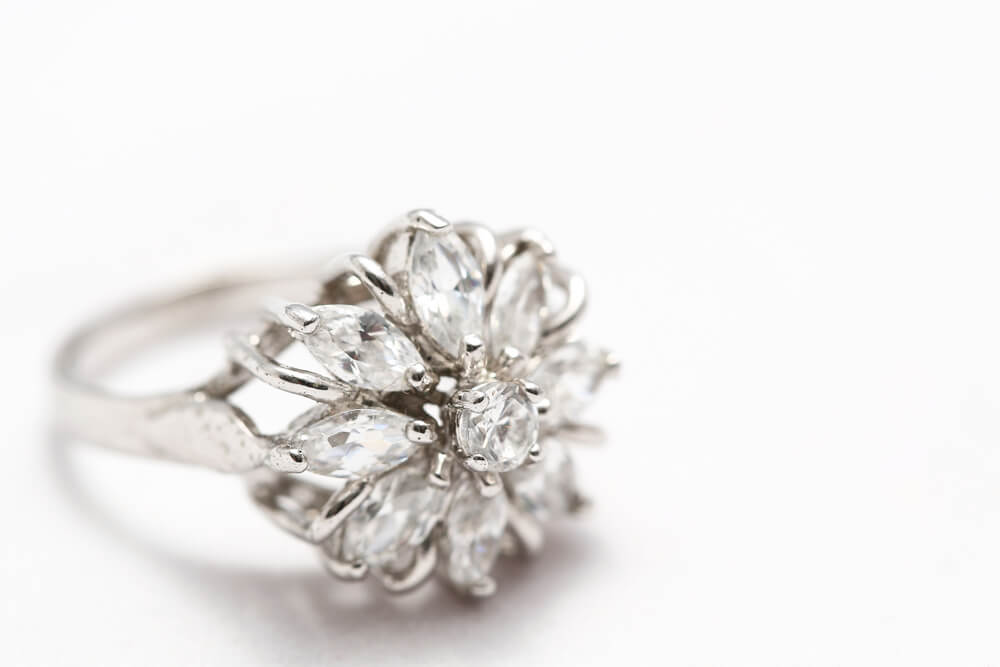Is Selling Your Engagement Ring on Worthy Worth It? Find Out!

In this comprehensive review, we’ll explore:
- Contrary to popular assumption, selling a diamond isn’t quite as easy as you might believe it to be.
- For the non-expert, figuring out who is giving you a reliable quote – and who is seriously undercutting the value of the piece you’re looking to sell – can be very difficult.
- That said, provided you get a quote from a reputable and trustworthy jeweler, you don’t have to worry about getting ripped off.
- Worthy’s alternative – sending your diamond off go be sold online – is adding way too many new complications into this process, and still not eliminating the risk of you losing money on your item.
Selling a diamond is rarely as fun or as exciting as buying a diamond. Sure, you’ll probably wind up with a good amount of money in your bank account by the end of it, but, as far as experiences go, it rarely ranks at the top of any list of ‘fun things to do with your time’ – unless, of course, you’re a professional diamond vendor, in which case making a sale is all in a day’s work.
But, for whatever reason, there are plenty of reasons why you might currently be navigating the complex world of the secondhand diamond market.
Our thoughts:
The positives: it could prevent some sellers from drastically underestimating the value of their diamond, or whatever piece of jewelry they are selling.
The negatives: we can’t see it saving sellers any time or effort and, even if it did, we don’t feel that the steep commission rates set by Worthy are worth it.
The Brand
Whether they want to be seen this way or not, Worthy is a little like a well-marketed, flashy, 2020s-era eBay for diamonds and fine jewelry. Established in 2014 by a husband and wife team who felt as though they were flat out of options for selling an unwanted diamond necklace.
Their solution? To create a platform that enables jewelers and other industry experts to bid on sellers’ pieces, based on appraisal and/or market value estimation made by the Worthy team.
It’s a little like the mirror-image of the online vendors we’ve reviewed (and discouraged our readers from) so much in the past, since its primary purpose seems to be wiping the bricks-and-mortar jewelry store out of the equation in favor of convenience and a (supposedly) better deal…
The Experience
To get your item listed on Worthy’s website, you first have to send your item into the company’s headquarters. There, they will ‘prep’ your item by giving it a clean, and get the diamond certified by a third-party gemological lab. On their website, they specifically mention the GIA, GHI, and IGI – all very different labs, with very different approaches to diamond grading. However, if you’re looking for designer jewelry near you, a visit to a reputable local jeweler may provide a more direct and trustworthy experience.
Sellers then stipulate a reserve price, and the item is put up for auction. The site’s ‘vetted professionals’ are free to view the listing and bid on the item. Of course, final say remains with the seller, and they are free to accept, or decline offers until they are happy.
It all sounds relatively simple, if not a great exercise in time-saving. The whole process, including filling out the online forms, packing and mailing the item, waiting to hear back from Worthy then waiting for the cleaning, appraisal, grading and photography to be completed – not to mention the potentially long process of waiting for an attractive bid – will take significantly longer than making a consultation with a local jeweler (or even heading into a local pawn shop) and selling the item that way.
The big tradeoff is that your item gets noticed by a much wider array of professionals, rather than the one or two who would end up seeing it if you made a trip into the city to sell it yourself.
But wasted time isn’t the only downside to using Worthy. There’s also the matter of the commission…
The Cost
Worthy makes its money by taking a pretty sizeable commission from each and every sale that goes through their platform. Obviously, a part of this has to pay for the grading, cleaning, and photography, and it isn’t totally outlandish, but for a seller who could pretty easily walk away with the full sale price if they were to take the traditional route, it seems like a wasted opportunity.
Worthy’s fees range from 10% (which is applicable for items that find a winning big of $30,001 or more), to 18% (for items with a winning bid of up to $5,000).
If you’re selling an item worth $5,000, then missing out on $900 represents a pretty major lost opportunity. Sure, the advantage of using Worthy over a bricks-and-mortar jeweler is that you get more exposure, and the ability to take advantage of a (possibly) competitive auction), but can you be sure that doing so would give you a price $1,800 higher than the one your jeweler would offer you?
If not, then the site doesn’t seem worth the effort or time from you.
Our Summary
If you are intent on selling your diamond jewelry online, then Worthy is, in our opinion, a stronger choice than a site like eBay. This is predominantly down to the appraisals they offer on every piece mailed into their headquarters, and the fact that, rather than any stranger on the internet, your pieces are receiving bids from industry professionals.
But, even then, we can’t see how sellers can have any more faith in the numbers being quoted to them than they would feel toward the numbers quoted by a reputable jeweler – also an industry professional – with a genuine interest in acquiring their piece.
But, even so – and as we mentioned above – the commission rates seem far too steep for us to see much value in Worthy’s unique approach to selling fine jewelry. Let’s say you sell a piece for $9,500. At Worthy’s commission rate of 14%, you’ll miss out on $1,330 and wind up with $8,170 – a monumentally high sum, given the original value of the piece.
Selling a piece of valuable jewelry isn’t easy – especially if you consider yourself a total novice in the industry – but understanding the basics of diamond value and, most importantly of all, knowing how to find a reputable jeweler in your area are the best ways to work out a strong and mutually beneficial deal. We can’t help but feeling the greatest benefit will always be felt by the person in a position to charge a high commission rate – sometimes as high as 22% — rather than the person who is already starting off on the back foot.
Note:
The insights provided in this review are drawn from publicly available data, customer reviews, and expert analysis. Our goal is to offer a balanced perspective to help buyers make informed decisions.
This site is not affiliated with or endorsed by Worthy. All information is based on publicly available data and independent evaluations. Logos and trademarks belong to their respective owners and are used for informational purposes only.
Readers are encouraged to verify all details with the retailer directly before making a purchase.

















